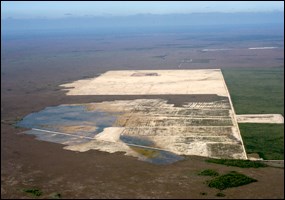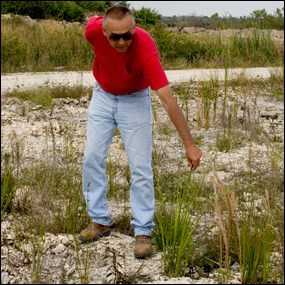|
Restoring Wetlands on Abandoned Agricultural Lands 
NPS photo Everglades National Park, Miami-Dade County, and the National Park Foundation have entered into a partnership to restore 6,300 acres of former agricultural land in Everglades National Park, known as the "Hole-in-the-Donut." Through cooperation with Miami-Dade County, the Florida Department of Environmental Protection, Florida Water Management Districts, and the U.S. Army Corps of Engineers, the Hole-in-the-Donut was established as an In-Lieu Fee Project and mitigation bank, the first in Florida and the only one in the National Park Service. Using the mitigation funds from credits applied to permitted development projects in Miami-Dade and Broward Counties, the park has undertaken a precedent-setting program of exotic plant removal and wetland restoration. For information on HID wetland mitigation credits, click here.

NPS photo This restoration project involved more than a decade of development, planning, field experiments and reports, and permitting. This project is a large and ambitious wetland restoration and when complete will not only restore about 6,300 acres of short-hydroperiod wetland, but also provide enormous benefit to the habitats surrounding the Hole-in-the-Donut that are in serious jeopardy from Brazilian pepper invasion. Everglades National Park is using the scientific information generated by this program to enhance its understanding of restoration and the many effects that people have on Everglades environments. Through this program of mitigation and science, Everglades National Park and our partners are ensuring a comprehensive program of exotic plant control and wetland restoration for one of the most important habitats in the Everglades. The restoration project has broad goals:

NPS photo Progress Following restoration, communities of short-to-medium hydroperiod prairie develop within the first year. Wildlife, such as wading birds and deer, return to the area to forage for food and leave seeds behind in their waste, helping to reestablish native vegetation. As of 2020, 6,063 acres of wetlands have been restored. Only 237 acres to go!
|
Last updated: October 31, 2022

